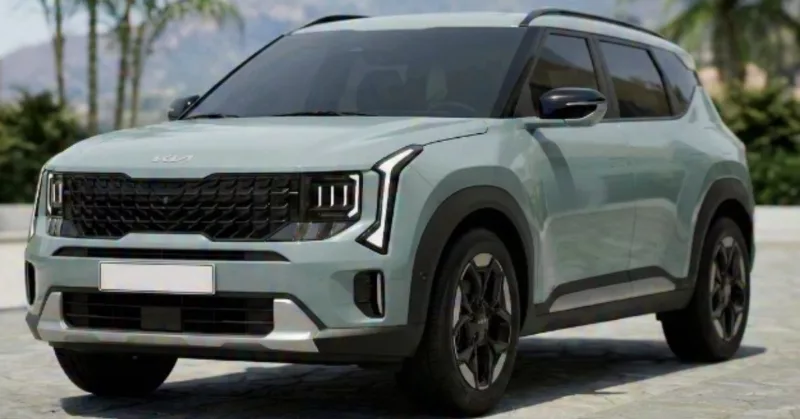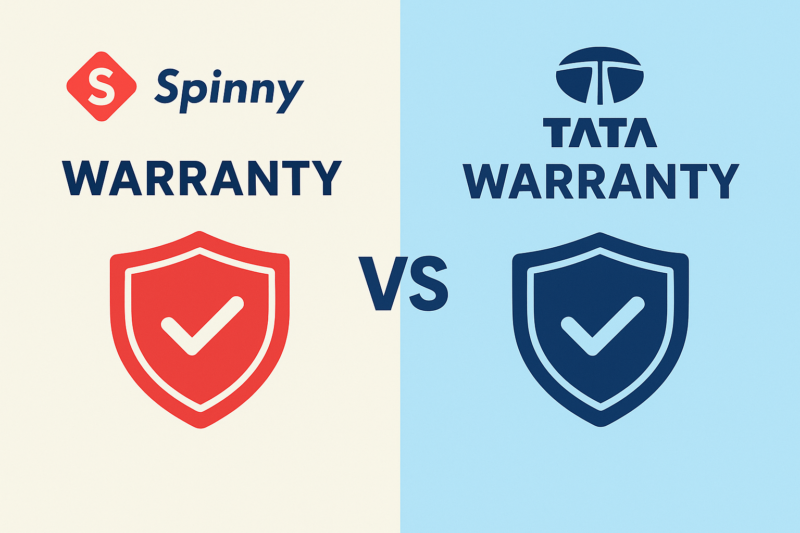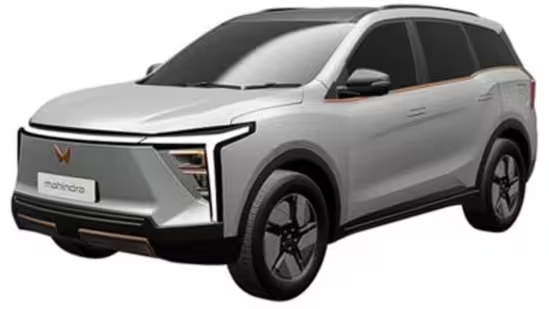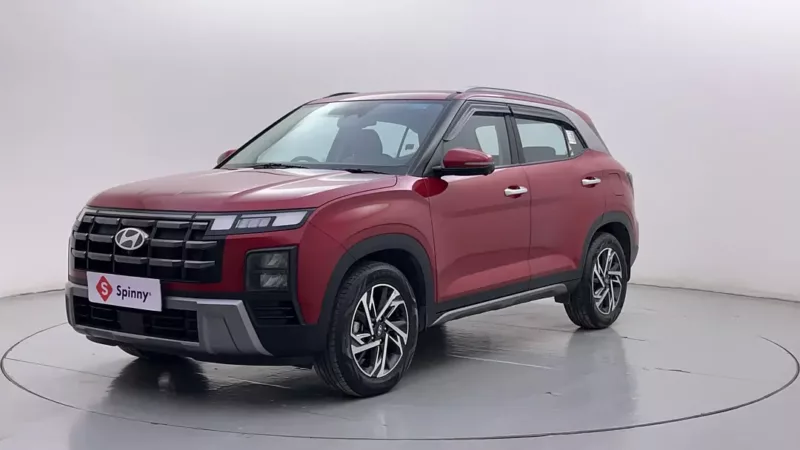The first thing most new car buyers want to know today is, how safe is their next car? The easiest way to understand this is by looking at the safety rating that is associated with a particular car, and for the Indian market, the Global NCAP is the primary body that assigns this rating.
The Global NCAP or GNCAP tests cars that are sold in the Indian market. It acquires vehicles through multiple channels, and puts them through two different types of crash tests (frontal offset and side impact), and then goes on to assign them a rating. These ratings are different for adult occupants and child occupants. If you would like to know more about the kind of testing that GNCAP conducts before giving out a safety rating, take a look at this in-depth explanation.
When talking about vehicular safety, it is important to looks at two aspects – Active and Passive safety features. Active safety features are those that work in real-time to avoid a mishap and are essentially preventive features, whereas passive safety features come into play when a mishap occurs and they protect the occupants from the brunt of an accident.
Let us first take a look at the active safety features that are essential in today’s day and age.
Also Read – Active Safety Features
Active Safety Features
Active safety features continuously monitor the car to provide assistance to the driver and enhance driving control to avoid accidents.
Anti-lock braking system (ABS) and Electronic Brake-force Distribution (EBD)

Anti-lock braking system or ABS and Electronic Brake-force Distribution or EBD are an essential car safety feature that have become standard on al cars in India. ABS stops the wheels from locking up when you apply the brakes over low-friction surfaces or while cornering. Lock ups can occur for various reasons ranging from but not limited to water, oil, or dirt being present on the road, to panic braking. The ABS releases and then re-engages brakes, as soon as it comes to know that a particular wheel is about to lock up. When ABS is activated, the pulsations of the ABS unit can be felt, and you will feel them in the brake pedal. As the ABS stops the wheel from locking up, you retain steering control over the vehicle, allowing you to change direction without sliding. If your wheels lock up, not only will you be braking in-efficiently, but you will also lose control over a car’s direction, as a locked-up wheel cannot grip the road surface to change direction.
EBD takes over when the time comes to re-engage the brakes. It decides how much braking pressure each tyre can take, and accordingly applies that much braking force to each individual wheel. This allows each wheel to brake in the most efficient manner possible. One thing to note here is that EBD is instrumental, because the amount of braking force each wheel can handle depends on various factors such as the balance of the car and the amount of tread present on the wheels, among other things.
In the real world, the ABS and EBD work harmoniously and they only come on when you brake hard and require braking assistance to retain control of the car.
Also Read – Anti Lock Braking System
Electronic Stability Control (ESC)
Electronic Stability Control or ESC is becoming more common in cars in India, and is quickly becoming a standard feature on compact SUVs. Have you heard of terms like traction control or Vehicle Stability Management? These are all features that come under the gamut of ESC. Essentially, ESC stops a vehicle from spinning its tyres or skidding over low-friction surfaces. It also helps the vehicle maintain its line when going through a corner. The ESC system in the car gathers information through multiple sensors. These are placed in the wheels and steering wheel. You also have sensors which measure the longitudinal and lateral rotation of a vehicle. All of this data is usually re-calculated around 100 times a second, meaning that the system can pick up on the slightest of changes.

To detect wheel spin, the system simply compares the individual speed of a wheel to the actual speed of the vehicle, and if the velocities do not match, it cuts the engine power going to that wheel. Some systems also use braking force to reduce wheel-speed in such scenarios, but ultimately, the effect is the same. In case a vehicle is not able to maintain its line through a corner and starts to skid off course, the ESC once again steps in to brake individual wheels and help the car maintain its course. The system applies braking force to the inside wheels during a corner to bring a vehicle back in line. It can also cut power to the outside wheels in this case, as they teeter on the edge of grip. ESC is one of the most powerful safety systems onboard a car that helps prevent complete loss of control.
Also Read – Electronic Stability Control
Tyre Pressure Monitoring System (TPMS)
TPMS or Tyre Pressure Monitoring System is another instrumental active safety feature that has more benefits than one. It measures the air pressure inside your tyres in real time, and warns you in case the pressure drops below or goes above the recommended level. The slightest changes in pressure can have adverse effects on how a car behaves when you apply the brakes or go around a corner. For example, under-inflated tyres will deform during braking and cornering, and also have the potential to come off the wheel. Similarly, over-inflated tyres will require more distance to come to a stop and their cornering grip will also be compromised. While these are bits that can help prevent an accident, maintaining adequate tyre pressure will also allow you to extract the maximum life from your tyres.
Also Read – Tyre Pressure In Car
Advanced Driving Assistance Systems (ADAS)
ADAS or Advanced Driving Assistance Systems is a relatively new feature when it comes to the Indian market. While it is made up of a host of features, it’s the AEB (Auto Emergency Braking) and LKA (Lane Keep Assist) that are the most important. The ADAS system uses radars and cameras to detect its surroundings and act accordingly. AEB, as the name suggests, will automatically apply the brakes if the system detects that a collision is imminent. At low speeds, this system has the potential to completely avoid an accident. At higher speeds, the vehicle might not come to a full stop, but the AEB will still reduce the severity of an accident.
LKA on the other hand keeps you in your lane. For this feature to work, it is important that road markings are clear and present on the road you are driving on. Therefore, it won’t work in some conditions, but when it does work (for example on the highway), it keeps you centered in your lane. If it detects that the vehicle is slipping out of its lane, it simply nudges the steering wheel in the opposite direction to keep the vehicle in the lane. While ADAS is an aid that helps on highways, you should always keep in mind that the driver is the primary person driving the vehicle. Therefore, even when ADAS is engaged, your full attention should be on the road. As for cars with ADAS in India, the Mahindra XUV700, MG Astor and Honda City e:HEV are some examples of mass-market cars.
Also Read – ADA Cars In India
Passive Safety Features
Passive safety features refers to features that reduce the chance of injury and death when you get into an accident.
Airbags

Airbags come into play milliseconds after an accident. The airbags deploy when the sensors in a vehicle detect impact force beyond a certain threshold. There is a small explosive charge inside the airbag unit that can inflate an airbag in a fraction of a second. How many airbags deploy depends on the number of occupants in a vehicle, the angle of the crash, and its severity. This also varies from carmaker to carmaker, but ultimately, if a vehicle is fully-loaded, then all airbags will deploy. In terms of mass-market cars, you can now get up to nine airbags onboard a vehicle. An example of this is the Skoda Octavia. The minimum mandate by the government is two, and it is considering increasing that number to six, and honestly in the case of airbags, the more the merrier. The airbag acts as a cushion between you and the hard structures of the passenger cabin. If you are not wearing your seat belt, and the airbag deploys, then the airbag can actually cause you damage as it inflates at an alarming speed.
Seat belts
In the event of an accident, a seat belt is your primary defence against injury and keeps you restrained in your seat in the event of an accident. By keeping you restrained, the seatbelt prevents your body from hitting different parts of the car or from being thrown out of your car. Seat belts also have additional built-in features like pretensioners and force limiters to increase the safety of the seat belt. Pretensioners work together with the airbag to tighten the seat belts and remove any slack to secure the passenger better. Force limiters prevent the seat belts from exerting too much pressure on the body and are designed to loosen should a preset load be exceeded.
There are also different types of seat belts. What you see in road cars is called the three-point seat belt, and was pioneered by Volvo in1959. Essentially, a three-point seat belt helps distribute the force across the body, and is better at restraining a human being in their seat than a lap belt. There are also four-point and five-point seat belts that are technically better than a three-point seat belt, but they are primarily used in race cars as it takes a while to do up these seat belts, which is not ideal for road cars.
Impact Sensing Door Unlock
Lastly, the doors of most modern vehicles are electrically operated, and in the event of an accident, the battery might get disconnected, making it impossible to open the doors. This can become a problem in situations where you might need to hastily exit a crashed vehicle. To make sure that’s possible, most carmakers offer the Impact Sensing Door Unlock feature. As soon as the onboard computer senses a crash, it automatically unlocks the door. This allows people trapped inside a car to quickly get out of the vehicle, or rescuers to gain quick access to the occupants inside.
Essential Car Safety Features Summary
When it comes to safety features in cars, the Indian government has moved quickly in the last half a decade. It has made crucial safety equipment mandatory on all cars sold in India, and that has pushed carmakers to offer even more safety features. However, we feel that if you can spend to a certain extent, then all features we have covered in this list should be present in your next car, as they vastly increase your safety on the road. Not only that, the proper use of these safety features is also important (like always wearing your seat belt so that the airbags can work effectively) to increase the effectiveness of the safety systems onboard.
FAQ about Car Essential Safety Features
Q. Is ESC a mandatory feature for all cars in India?
Not yet. But the government does plan to make Electronic Stability Control (ESC) mandatory from 2023.
Q. Why are child seats required for ISOFIX?
Since OEM seats are made for adults, these seats can develop into a major safety hazard if children are seated in them. Child seats are built to keep children safe and mount into ISOFIX brackets given in the car.
Q. Can Speed Warning be turned off?
Only if you drive under the speed limit. These systems cannot be overridden and are in place for your safety.
Q. Does TPMS come standard with cars in India?
No, TPMS doesn’t come as standard, however, you can buy it aftermarket and get it installed on your car.
Q. Can parking sensors be replaced?
Yes, they can be, you will have to find a proper replacement set and go to a car garage to get the job done.
Q. What safety features are mandatory in India cars?
Dual airbags for front passengers, Seat belt alert, Speed alerts, Rear parking sensors
Q. Which are the safest cars in India?
The safest cars in India are the Tata Punch, Mahindra XUV300, Tata Altroz, Tata Nexon and Mahindra XUV700, in that order. These are all five-star rated cars, although their overall protection scores differ from each other.
Q. Which cars come with ADAS in India?
At present, there are few mass-market cars in India that offer ADAS. They include the Mahindra XUV700, MG Astor, Hyundai Tucson, MG Gloster, MG ZS EV and Honda City e:HEV.



